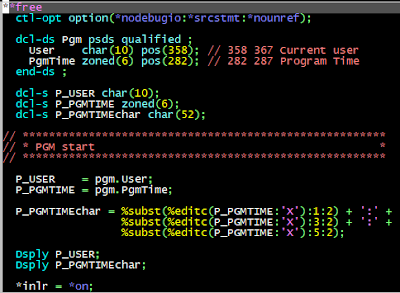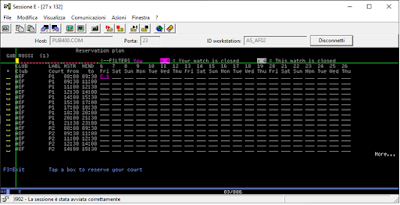(IBM i fans only) Program Status Data Structure (PSDS), %editc BIF (Built-In Function), and %subst BIF in RPG free.

The program is indeed a simple and minimal example that demonstrates the usage of Program Status Data Structure (PSDS), %editc BIF (Built-In Function), and %subst BIF (Built-In Function) in RPG free. Program Status Data Structure (PSDS) : The psds named Pgm is utilized to store system-related information like the current user and program time. The pgm.User and pgm.PgmTime fields are accessed within the program. %editc BIF : The %editc BIF is used to convert the zoned decimal value P_PGMTIME into a character representation. This is commonly done when formatting numeric values for display. %subst BIF : The %subst BIF is used to extract portions of the formatted time string P_PGMTIMEchar. It is used to create a time string in the format "HH:MM:SS" by extracting and concatenating substrings. Overall, this program is a concise example that showcases the use of these RPG features for obtaining system-related information and manipulating ...








